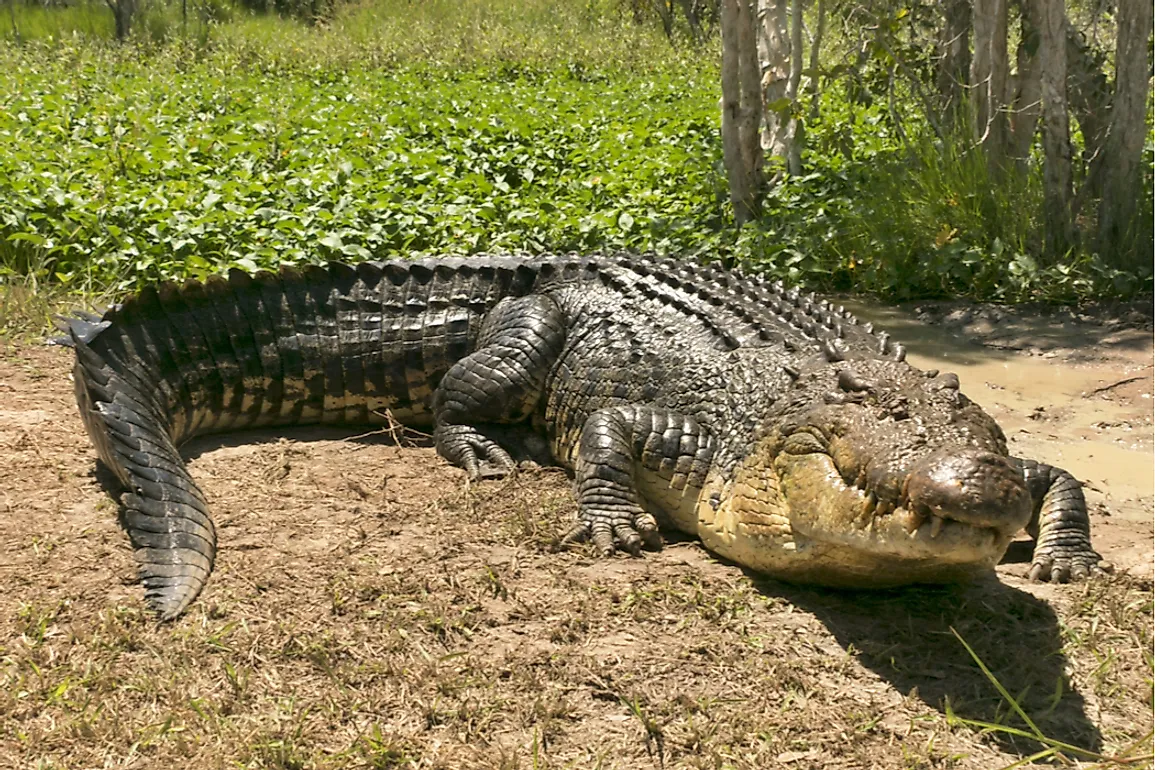What Was The Largest Crocodile Ever Recorded?

Saltwater crocodiles are the largest reptiles. Males can typically grow to 6 m (19.7 ft) in length and weigh 1,000 to 1,200 kg (2,200–2,600 lb) while females are much smaller at 3 m (9.8 ft). Although once widespread in Southeast Asia, their populations have declines to sporadic numbers in India, Bangladesh, Sri Lanka, Myanmar, Indonesia, the Philippines, and Malaysia. However large populations remain in northern Australia and New Guinea.
The Largest Crocodile
The largest crocodile ever in captivity measured 6.17 m (20 ft 3 in) from snout to tail, and weighed 1,075 kg (2,370 lb). The crocodile, named Lolong, was captured and taken into captivity in the Bunawan Ecopark and Wildlife Reservation Center. He was confirmed as the largest crocodile in November 2011 by an Australian zoologist named Adam Britton.
The crocodile was named after Ernesto "Lolong" Goloran Cañetea, a renowned crocodile hunter in Palawan who was initially leading the hunt for weeks before the capture, but succumbed to illness several days before the crocodile was captured.
Capturing Lolong
Lolong was captured on September 3, 2011, in a creek in Bunawan, Agusan del Sur, Philippines. The hunt and capture of Lolong involved the joint cooperation of locals, the Philippine government, and crocodile hunters from Palawan.
The hunt and eventual capture of the giant crocodile took close to three weeks and once caught, a hundred people were required to bring him to land. And even then, Lolong was very aggressive and broke the restraining ropes two times.
Lolong was suspected to have been eating water buffaloes in the area and was also suspected to have attacked a local fisherman in the local town of Bunawan. However, these claims were unsupported and there was no evidence that the crocodile had consumed the fisherman or the water buffaloes when the contents of its stomach were examined.
The capture of the crocodile prompted certain NGOs and activists such as the Animal Kingdom Foundation to call for the release of the animal back into its habitat. However, the local mayor of Bunawan and the locals were opposed to the idea of returning him to the creek citing that the crocodile would be a threat to locals living in the area.
Lolong’s Contribution to Local Tourism
The crocodile quickly became the main source of attraction for the local ecotourism park, boosting income and job opportunities for the local residents. Bunawan Ecopark and Wildlife Reservation Center, located 8 km from the local township, became famous because of Lolong. This had a ripple effect on local tourism at large.
The crocodile was kept in an enclosure that was opened for public exhibition on September 17, 2011, where visitors paid an entrance fee. The proceeds from the exhibition were used for Lolong’s food and other maintenance costs. It is estimated that the crocodile earned well over half a million pesos in the first two months which was a huge success.
As a continued partnership between the local government and the private sector, there are future development projects for the park to ensure giant crocodiles like Lolong, found in the Agusan marsh in Bunawan, continue to be preserved as well as attract tourists. This will also ensure the eco-park continues to serve now and for future generations. The development projects will focus on the construction of lodging houses, cottages, swimming pools, laboratory, a research center, and other amenities.
The Death of Lolong
After holding the record for the largest crocodile in the world, Lolong died on February 10, 2013, at an estimated age of 53 years. A necropsy revealed that he suffered from pneumonia, fungal infection, cardiac arrest, and stress. His remains are kept on display in the National Museum of National History in Manila.











